1980 Half Dollar Coin Value: How Much Is It Worth?
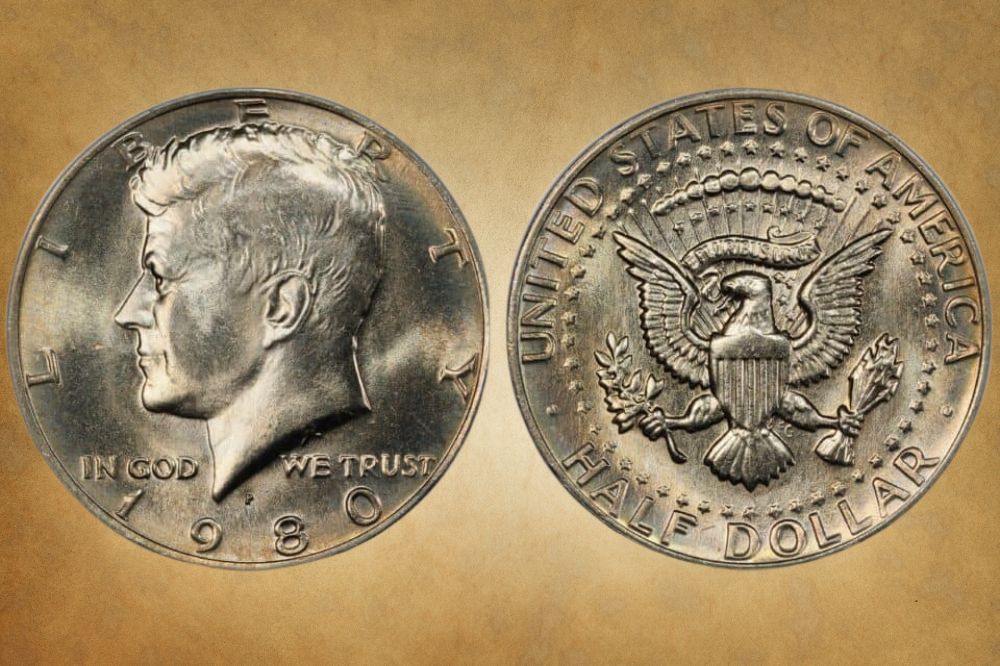
The Kennedy halves were issued from 1964 to the present, and the initial reason for their appearance was the assassination of the 35th American President. The mintage of coins from the first year in the 1980s was the highest in the decade, affecting the 1980 half dollar value and availability.
These coins were the first struck after one change in the US Mint politics in 1980. American coinage produced in the Philadelphia mint from this year got the P mint mark. You can see that letter below the neck truncation on the coin obverse.
1980 half-dollar value Chart |
||
| Type | MS 63 | PR 65 |
| 1980 P half-dollar | $2.28 | / |
| 1980 D half-dollar | $2.28 | / |
| 1980 S proof half-dollar | / | $4.52 |
1980 Half-dollar Value Guides
In 1980, three US mints minted 81,145,255 Kennedy half dollars. Those in Philadelphia and Denver struck only coins from the regular strike, while all proofs came from San Francisco this year.
Both mints achieved the highest regular coin mintage during the 1980s, while the number of proofs was standard for this decade.
1980 P Kennedy half dollars
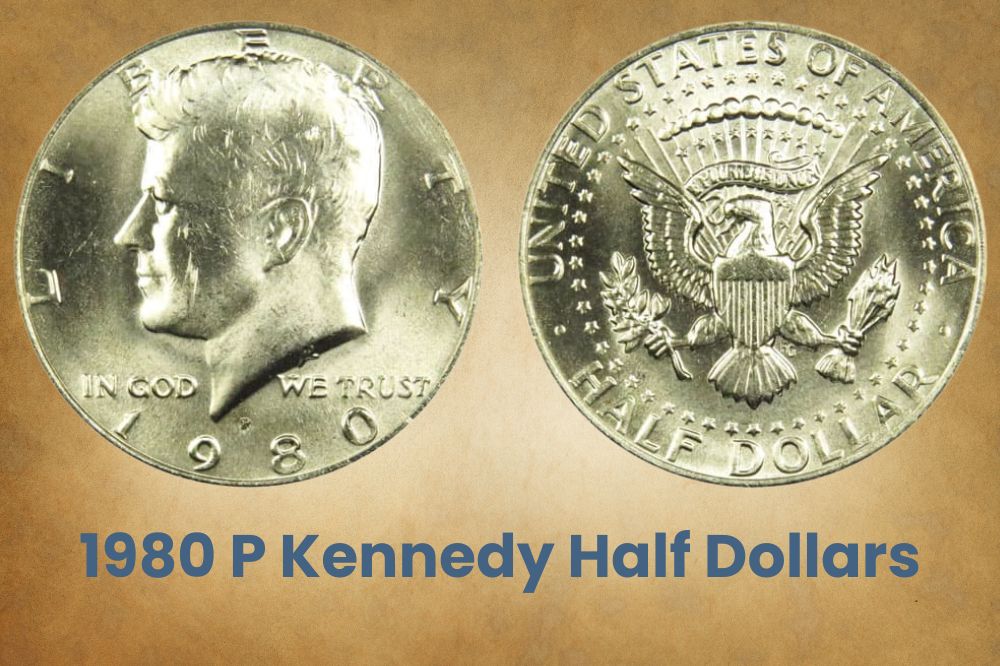
In 1980, the Philadelphia mint struck a record number of half dollars in the new decade. Besides, it was the mint with the highest mintage this particular year, with 44,134,000 produced pieces.
All these facts affect the price of coins with the P mint mark. You can find those in about uncirculated condition for less than a dollar, while specimens in the mint state cost up to $65. As always, their price depends on minting quality and coin preservation.
| 1980 Kennedy half-dollar value | ||
| Condition | 1980 P half–dollar | 1980 D half-dollar |
| AU | $0.70 | $0.70 |
| MS 60 | $0.75 | $0.75 |
| MS 61 | $0.80 | $0.80 |
| MS 62 | $0.90 | $0.90 |
| MS 63 | $1 | $1.25 |
| MS 64 | $3 | $3 |
| MS 65 | $8 | $15 |
| MS 66 | $15 | $80 |
| MS 67 | $65 | $300 |
| MS 68 | / | $3,000 |
The most expensive piece struck this year in Philadelphia was sold at Heritage Auctions in 2006. One collector purchased this lovely coin in an MS 63 grade for $1,150.
1980 D Kennedy half dollar Value
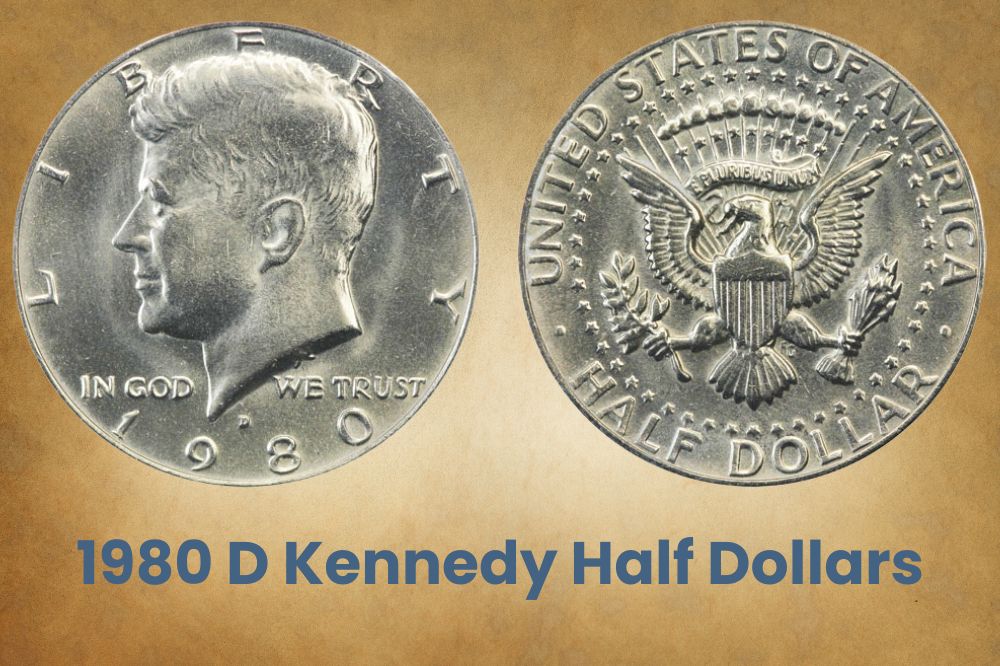
The Denver mint produced 33,456,449 Kennedy half dollars in 1980, reaching the second-highest mintage of the year. The price of coins in the lower grades is similar to those struck in Philadelphia, but the situation changes with the higher-graded specimens.
For instance, you can find a piece in an MS 65 grade for $15, while those with an MS 67 rating cost $300. The rarest halves are always those that are the best-preserved.
Real admirers are prepared to pay at least $3,000 for a rare Kennedy half-dollar in an MS 68 grade. Thus, one such specimen was sold at an auction in 2015 for a higher price than estimated. One collector set aside $4,935 for this beautiful scarce coin.
1980 S Kennedy half dollar Value (proof)
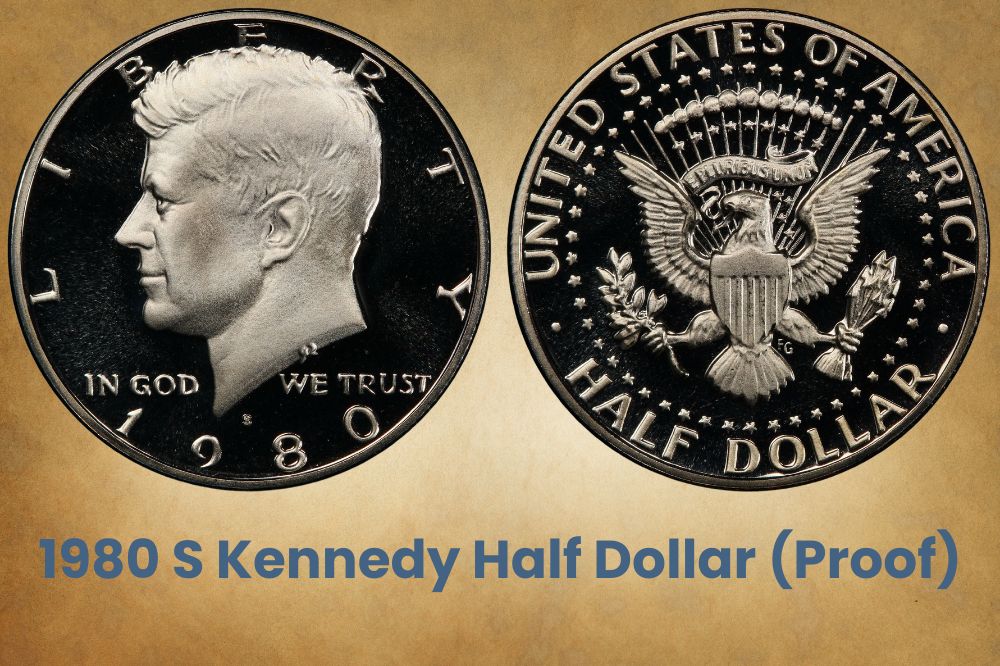
The San Francisco mint produced only Kennedy half-dollar proofs in 1980. The mintage of 3,554,806 coins was standard for the decade, affecting these pieces’ prices on the current coin market.
You should set aside about $4 to $8 for most coins with the S letter struck on the obverse. However, those in perfect condition with a PR 70 rating quickly reach $60 at auctions.
1980 proof Kennedy half-dollar value |
|
| Condition | 1980 S half-dollar |
| PR 64 | $4 |
| PR 65 | $5 |
| PR 66 | $6 |
| PR 67 | $7 |
| PR 68 | $8 |
| PR 69 | $8 |
| PR 70 | $60 |
In 2003, one of these coins reached an unbelievable price of $920. That way, it became the most precious piece among proofs with the 1980 minting year on the obverse.
Related Posts: 26 Most Valuable Half Dollar Coins In Circulation
1980 Half-dollar Errors
You can find numerous Kennedy half-dollar errors from many minting years, but 1980 is not one of them. It is almost impossible to find a piece with significant imperfections, but some collectors have reported specimens with slight errors, like:
- Doubled die
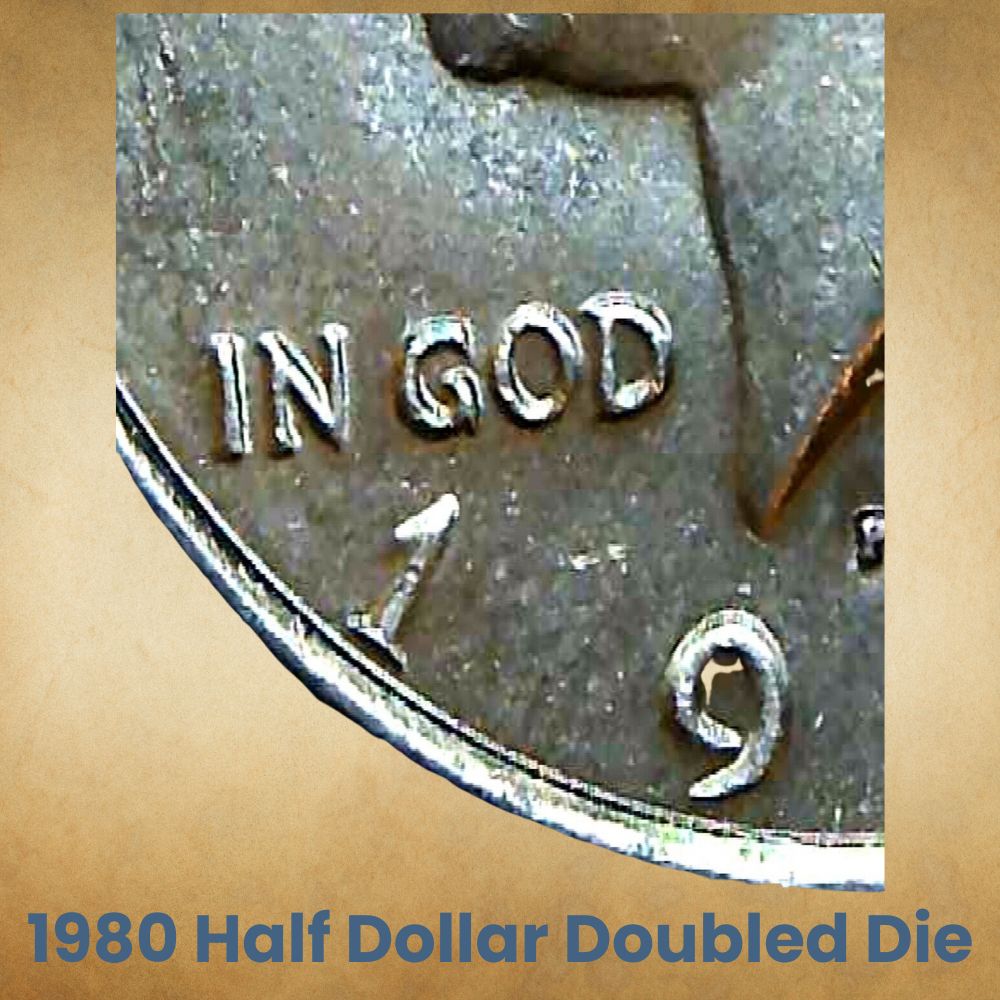
- Kennedy half-dollar struck on an SBA planchet
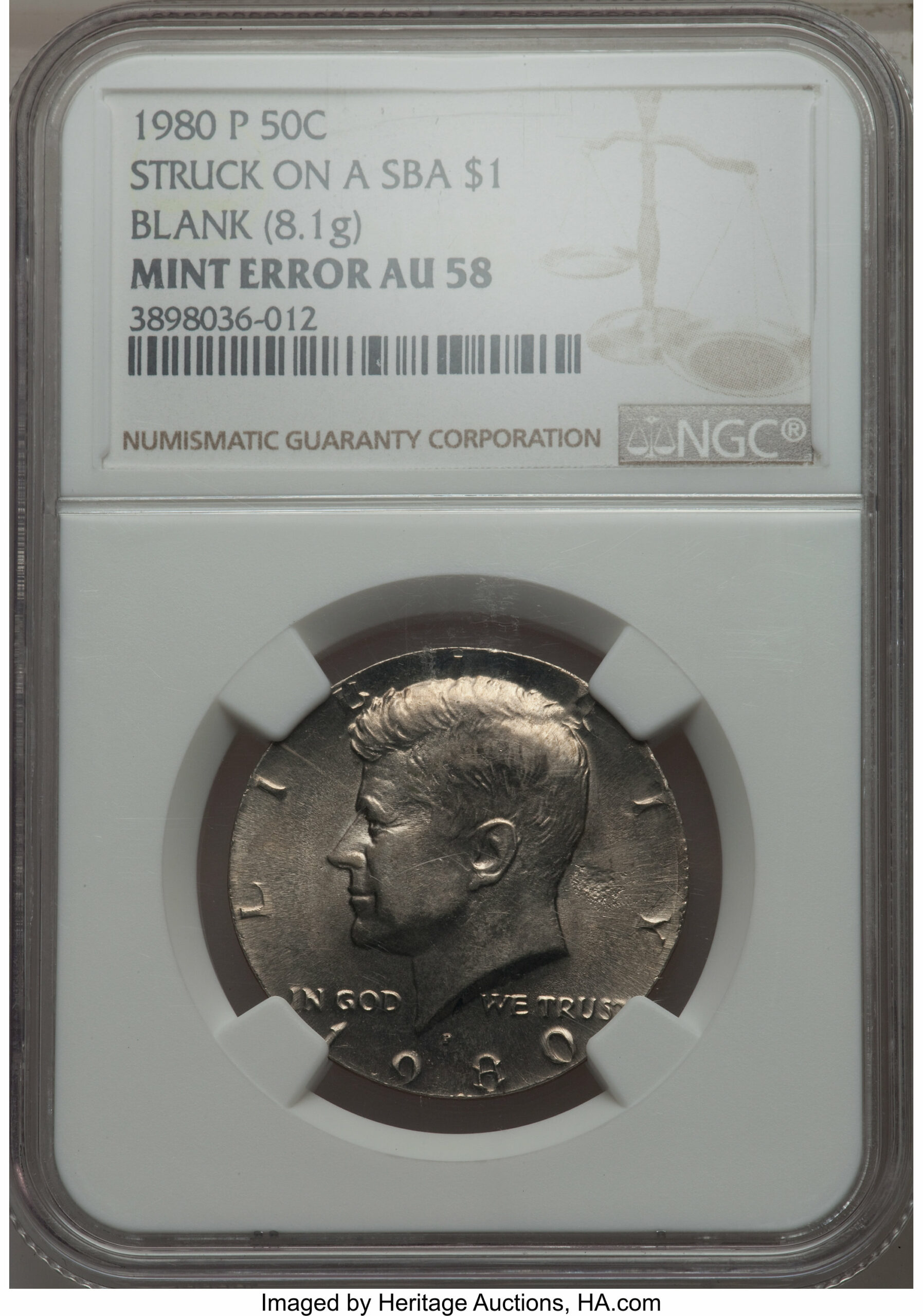
- Broad strike
- Collar clash
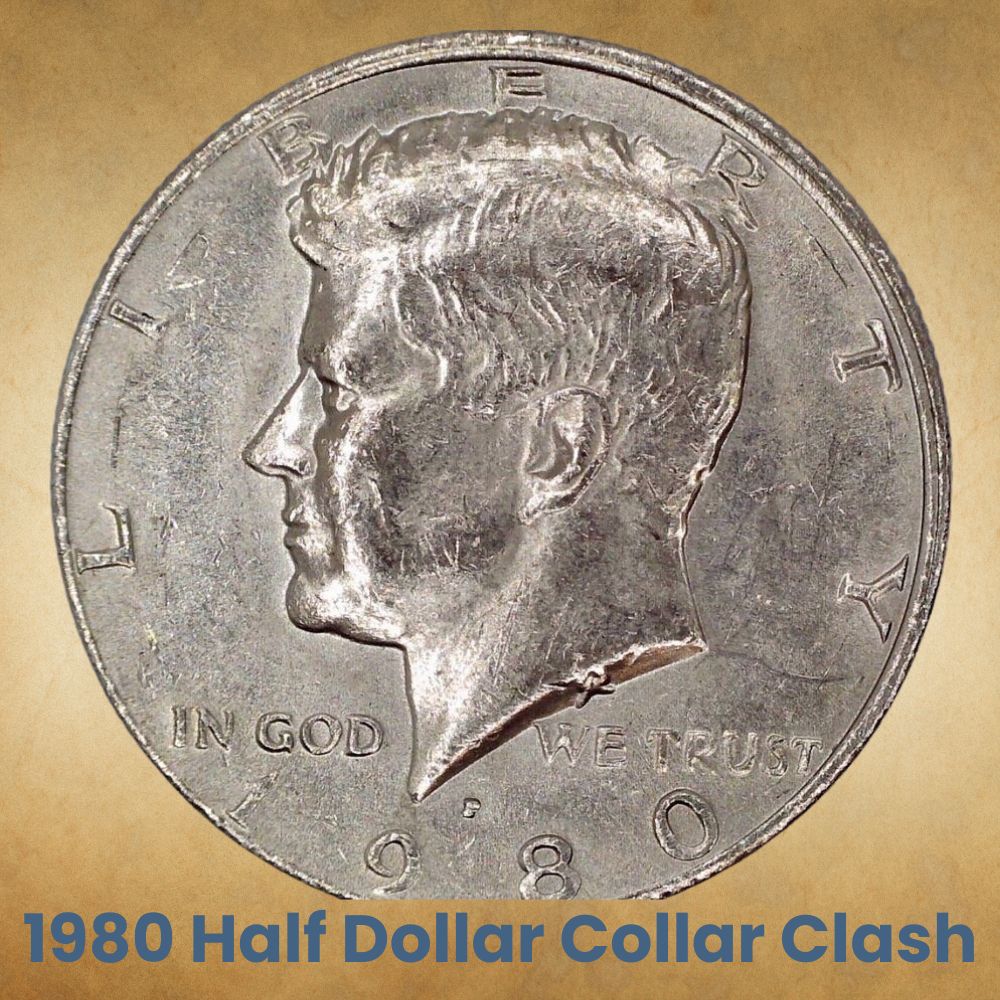
You can expect coins like this to always cost more, no matter how insignificant the error is.
Related Posts: 17 Most Valuable Kennedy Half Dollar Worth Money
History of the 1980 Half Dollars
The first silver American half dollars occurred in circulation in 1794 with Lady Liberty on the obverse. This imaginary woman disappeared from the American coinage in 1947 when Benjamin Franklin’s image replaced it on this coin type.
Creating new coins
Unfortunately, the design with Franklin was short-lived because of President John F. Kennedy’s assassination. Quickly after that horrifying day, the US Mint issued the Kennedy half-dollar in 1964. Only several months took for Congress to pass a law and cancel the previous half-dollars’ production.
Gilroy Roberts needed a few weeks to finish the new design with Kennedy on the obverse. On the other hand, Frank Gasparro used the heraldic eagle from the Great Seal of the United States as a model for the coin reverse.
Interestingly, authorities considered several options, and the idea was to make a nickel, quarter, or half-dollar with the former President’s image on the obverse.
The Treasury and the Mint consulted the Kennedys about the issue out of respect for the family. Jacqueline Kennedy was the one who chose the half-dollar to avoid removing George Washington from the existing coinage.
Unfortunately, that meant replacing Benjamin Franklin half dollars with the new design. Only a month after engravers finished a new half-dollar design, President Johnson legalized it on 30th December 1963.
The Philadelphia mint prepared a series of trial strikes only two weeks earlier. Robert Kennedy, the US Mint Director, and the Secretary of the Treasury approved the new design, but Jacqueline Kennedy had an objection.
She asked for improvement because the hair was too pronounced. After necessary corrections, minting began in January of the following year. The US Mint staff managed to prepare everything required for producing the new halves within a few weeks.
The Kennedy half dollars were issued on 24th March 1964 for the first time, about four months after President’s assassination. The US Mint had never managed to organize such important work in such a short time before. To be honest, no one has ever tried it again.
Releasing new coins into circulation
The Treasury released 70,000 Kennedy half dollars on 24th March 1964, and banks limited purchases to 40 coins per customer. Despite that, Americans waited for hours in lines and grabbed the offered halves by noon.
Therefore, the US Mint Director Adams changed her decision, and mints produced 160 million halves in 1964 instead of the initially planned 90 million. It was nearly double the number of coins compared to the Franklin halves minted the previous year.
However, Americans continued collecting these silver pieces dedicated to tragically assassinating President. Therefore, Congress approved 1964-dated coins to continue minting into 1965, raising the final number to 410 million pieces.
Unfortunately, that depleted the stocks of silver, forcing Congress to pass the Coinage Act of 1965, reduce the silver percentage, and allow the minting of silver-clad halves. As a result, the US Mint started producing half dollars with 40% silver in 1965.
1980 Kennedy half-dollar |
||
| Location | Year | Minted |
| Philadelphia | 1980 P half-dollar | 44,134,000 |
| Denver | 1980 D half-dollar | 33,456,449 |
| San Francisco | 1980 S half-dollar (proof) | 3,554,806 |
| Total | / | 81,145,255 |
Special issues
Even though these coins’ look has stayed unchanged for years, they came in several compositions, including:
- The initial coins were made of 90% silver and 10% copper in 1964
- Silver-clad coins containing 40% silver from 1965 to 1970
- Copper-nickel clad pieces (75%: 25% copper and nickel ratio) since 1971 to these days
Besides coins from the regular strike, you can also recognize some unique pieces, like commemorative gold Kennedy half dollars made of 0.999 fine gold and silver versions for collectors. The US Mint struck special silver pieces three times, including:
- Kennedy half-dollar with a double date (1776-1976) made of 40% silver dedicated to the Declaration of Independence bicentennial
- Kennedy half-dollar proofs minted from 1992 to 2018 that contained 90% silver
- 2019 Kennedy half-dollar proofs with 99.9% silver
Finally, the US Mint started Kennedy halves’ production only for annual coin sets in 2002. However, the Federal Reserve can order pieces for circulation whenever needed.
Related Posts: 18 Most Valuable Franklin Half Dollars Worth Money
How to Identify the 1980 Half Dollars?
Engraver and sculptor Gilroy Roberts created this coin in a hurry, and the first pieces appeared in circulation only four months after President Kennedy was assassinated. Unlike the original halves made of silver in different percentages, the version minted in 1980 was copper and nickel clad.
The obverse of the 1980 half dollars
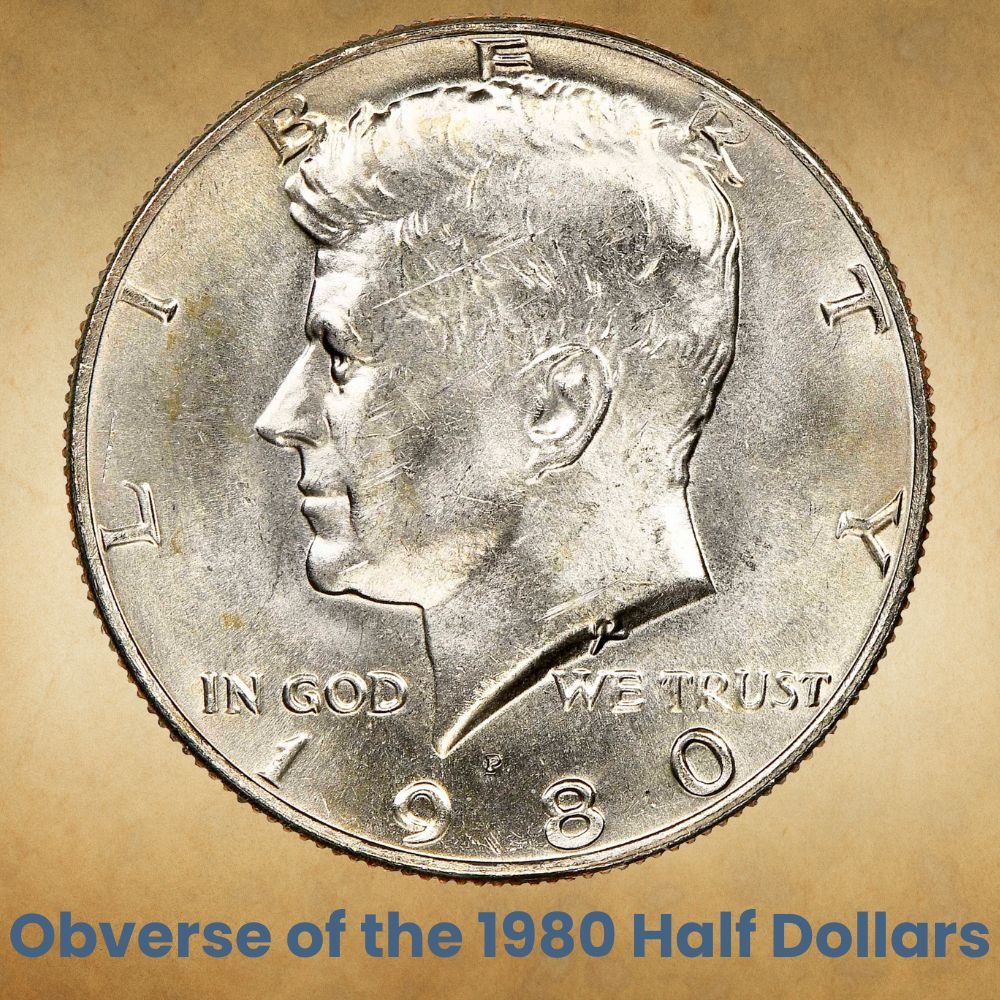
President John F. Kennedy’s profile is depicted on the coin obverse. Since the new coin design had to be done urgently, sculptor Gilroy Roberts based it on an existing portrait intended for the presidential medal.
He added the word LIBERTY on the coin top and the DATE below the portrait, while the inscription IN GOD WE TRUST is divided into two parts and placed left and right of the bust. Since all halves struck this year had the mint mark, you can see a P, S, or D letter just above the date.
The reverse of the 1980 half dollars
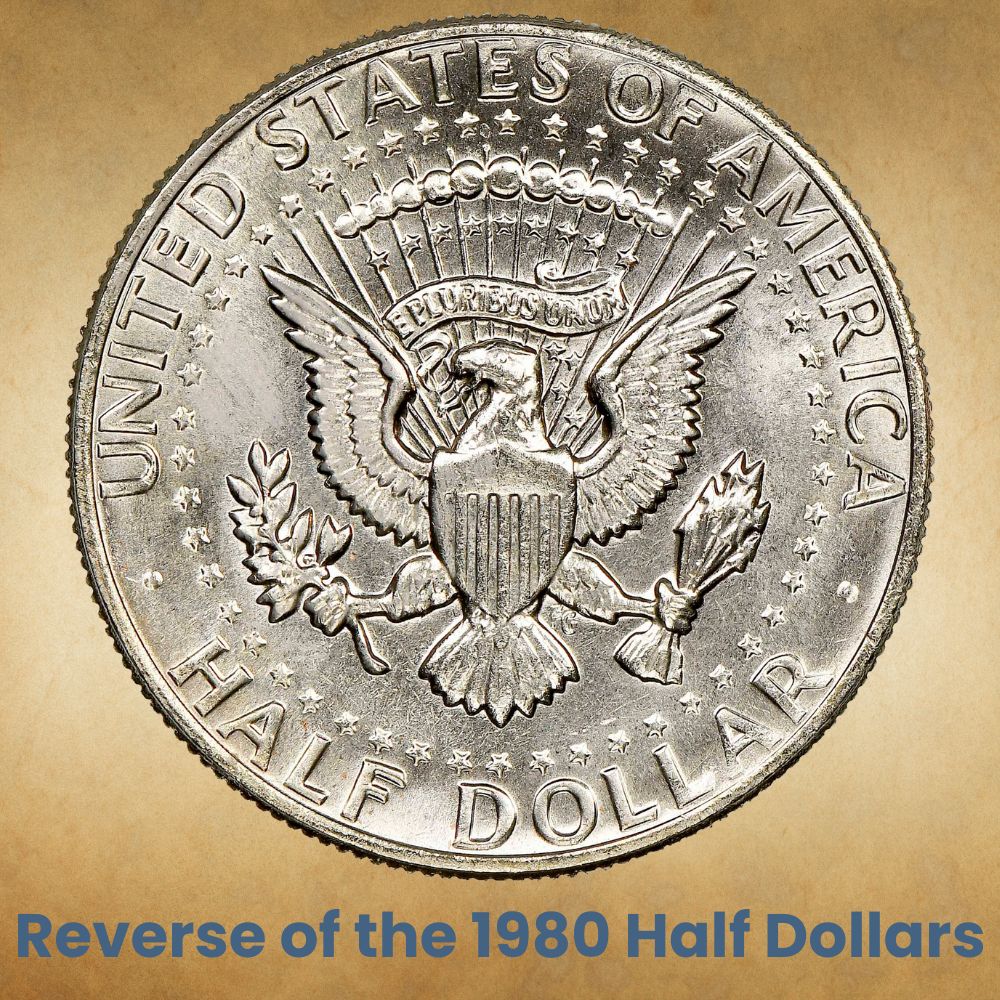
Unlike the simple obverse, the coin reverse is complicated, as if the designer wanted to fill the surfaces and avoid leaving any free space. The Presidential seal with a heraldic eagle wearing a ribbon with the inscription PLURIBUS UNUM is placed in the center.
The bird wears a shield in front and holds an olive branch in the right claw and thirteen arrows in the left. The entire image is full of symbols, combining the importance of the original states, war efforts, and striving for peace.
A ring around the eagle made of 50 stars represents current states with the name of the country at the top. The denomination, HALF DOLLAR, is struck along the bottom rim.
1980 Kennedy half dollars |
|
| Face value | Fifty cents ($0.50) |
| Coin diameter | 30.6 mm (1.20473 inches) |
| Shape | Round |
| Compound | Copper and nickel at 75%: 25% ratio over a center made of pure copper (91.67% copper in total with 8.33% nickel) |
| Coin thickness | 2.15 mm (0.08464 inches) |
| Coin weight | 11.34 g (0.4 ounces) |
| Edge | Reeded (159 reeds) |
Other features of the 1980 half dollars
The 1980 Kennedy half-dollar‘s face value is fifty cents. This round, clad coin with a reeded edge contains 91.67% copper in total, but its composition is complex. The core is made of pure nickel wrapped with copper and nickel alloy layer with a ratio of 3:1.
This half-dollar is thick 2.15 mm (0.08464 inches) and has a diameter of 30.6 mm (1.20473 inches). Its standard weight is 11.34 g (0.4 ounces).
Are 1980 Kennedy half dollars rare?
Unfortunately, the 1980 Kennedy half dollars are common coins without rare variations and collectible errors. In most cases, their value is in completing the set.
Which 1980 Kennedy half dollars come with a high price?
- At Heritage Auctions, one collector paid $4,935 for the 1980 D MS 68 half-dollar (2015)
- At Heritage Auctions, one collector paid $1,150 for the 1980 P MS 63 half-dollar (2006)
- At Heritage Auctions, one collector paid $920 for the 1980 S PR 70 half-dollar (2003)
How much do 1980 P Kennedy half dollars cost?
Even though all collectible 1980 Kennedy half dollars are worth more than their face value, they are not in a group of costly coins. In most cases, you should pay about 70 cents to $65 per piece. Only top-quality specimens can sometimes reach high prices at auctions.
What are the most collectible and valuable Kennedy half dollars?
- The priciest silver coin Type 1 (special strike) is the 1964 SMS SP 68 half-dollar. It was paid an astonishing $156,000 in 2019 at Stack’s Bowers.
- The priciest silver-clad coin Type 2 (special strike) is the 1967 SMS SP 69 Deep Cameo half-dollar. It was paid $31,200 in 2019 at Heritage Auctions.
- The priciest silver coin Type 1 (regular strike) is the 1964 D MS 68 half-dollar. It was paid $22,325 in 2016 at Legend RC Auctions.
- The priciest silver-clad coin Type 2 (proof) is the 1968 S PR 70 Deep Cameo half-dollar. It was paid $21,600 in 2017 at Heritage Auctions.
